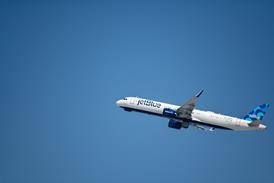New US Part 135 rules crack down on operators
Fallout from the February 2005 take-off crash of a chartered Bombadier Challenger 600 at Teterboro airport, New Jersey will hit Part 135 air taxi companies in the coming months as the US Federal Aviation Administration imposes new operational specifications set to go live on 15 March.
At issue are the safety assurances the FAA wants passengers to have when chartering or flying an aircraft from a Part 135 operator, a complex situation given that the vast majority of turbojet aircraft used by the 2,500 air-taxi certificate holders in the USA do not belong to the companies. In many cases, private owners sublet their aircraft to companies to generate revenue.
|
|---|
The 2005 Challenger 600 crash at Teterboro helped spark FAA rule change |
The Teterboro crash, which injured the crewmembers, eight people in the cabin and several more on the ground, shows how complicated the chartering web had become.
The passengers had booked the trip through a broker, who then chartered the aircraft from an air taxi operator, which had been paying a Part 135 certificate holder to have its aircraft listed as part of the Part 135 operator's fleet, a practice known as "franchising" the 135 certificate.
While the arrangements could be legal if carried out properly, the FAA had discovered that in many situations, Part 135 companies had lost "operational control" of the charters, as was the case at Teterboro.
Problems were exacerbated by local FAA inspectors who differed in their opinions as to what was allowable for their Part 135 charges.
Some arrangements bordered on deception. "In some instances, it appeared that these parties characterised their business arrangement so an aircraft owner or management company purportedly could operate the aircraft in common carriage under the auspices of the air carrier's certificate," the FAA says. Spelled out in the notice are rules for how the FAA expects operators to maintain control of their operations, or risk having regulators shut them down.
Officials at the National Business Aviation Association, which along with other groups assisted the FAA in formulating the policy, express concern that the final product leaves key details open to different interpretation by FAA inspectors and the Part 135 companies they oversee.
One example is that the FAA did not explicitly state whether a Part 135 company can lease the crew along with a private owner's aircraft, a pairing that is generally the safest combination.
Source: Flight International
























